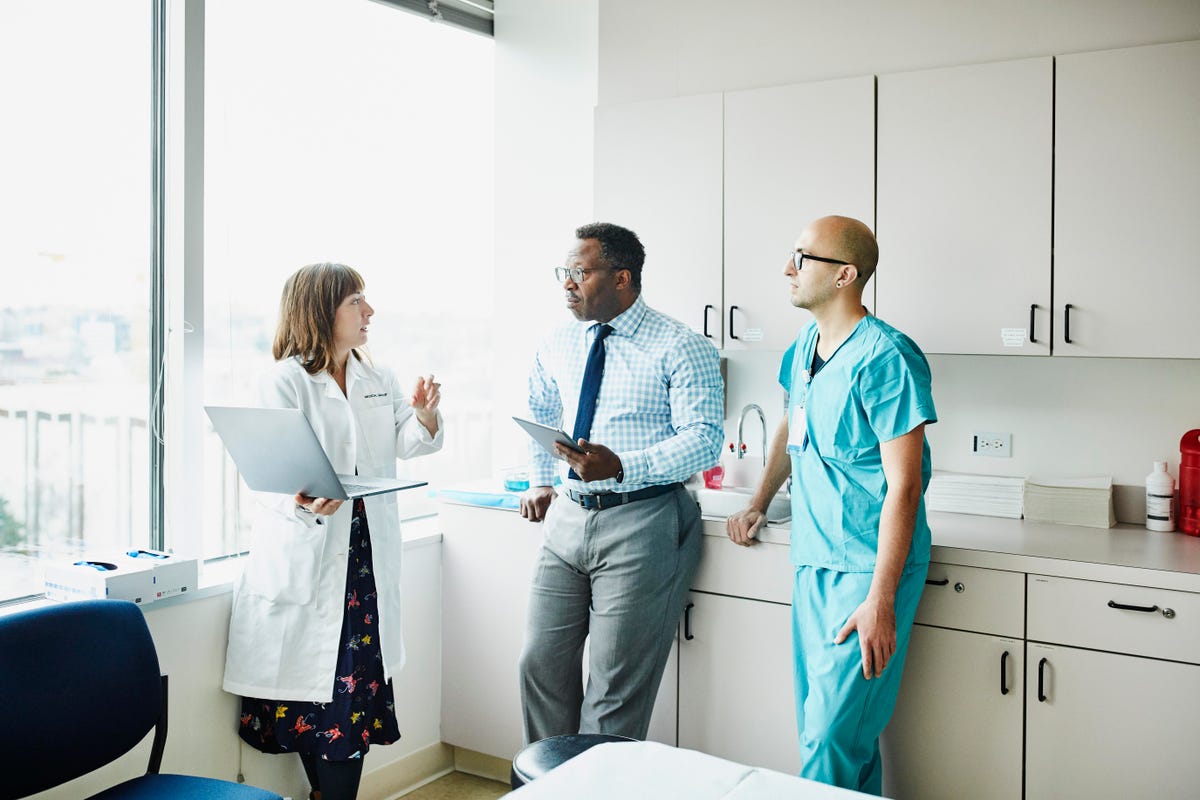Council Post: How Digital Twins Can Accelerate… Leave a comment

Tom Niehaus is Executive Vice President, North America, at CTG.
getty
While digital twins have taken off in industries like energy and manufacturing, we are poised for a revolution in how they are used across every sector, with healthcare holding great potential for positive human impact.
As a tech executive with four years of working with digital twins, it’s exciting to see how lessons learned in the energy sector could benefit the healthcare sector. Digital twins offer real-time reporting to support informed, risk-based assessments and data-driven decision-making to improve operations and mitigate risks.
These use cases we’ve seen in the energy industry—focusing on asset utilization, performance and maintenance—are translating into other sectors as they increasingly adopt digital twins to improve efficiency, productivity and profitability.
But digital twins will do more than improve business operations. The emergence of digital twins in healthcare holds great promise for improving the lives of entire populations. With healthcare under unprecedented pressure, providers can deploy digital twins to better navigate our “new normal” and operate more nimbly while continuing to meet the standard of high-quality patient care.
The shift is already underway. Gartner Inc. predicts, “By 2025, 25% of Healthcare Delivery Organizations will include formalized digital twin initiatives within their digital transformation strategy.”
Transforming Health Operations And Patient Care
Let’s look at a few potential use cases for digital twins in healthcare.
1. Bed Occupancy
The pandemic revealed the dire impact that inaccurate bed occupancy predictions can have on population health. Digital twins can mitigate this through better predictive analytics based on combining internal and external data—tracking patient flow internally and forecasting potential spikes using external data including population demographics and morbidity, community disease prevalence and transmission, and more.
Collected and visualized through a digital twin, this data can enable providers to think more strategically about capacity and resources based on better forecasting—improving patient care as well as operational efficiency and profitability.
2. Medical Device Utilization
Like oil refineries, health systems are asset-intensive facilities with monitoring and imaging devices, respirators, surgical tables and so much more that must be available to deliver optimal care at any time. Digital twins can give providers real-time visibility into how these increasingly connected devices are utilized, their performance and the need for repair—before a critical breakdown puts patients at risk. This is more vital with robotics and other high-value medical devices, which must be optimized for both patient care and revenue.
3. Patient Simulations
This technology can also offer a digital twin created for each patient’s body, physiology and medical history. The twin can enable precision testing of thousands of treatments, leading to better-informed decisions that can improve patient outcomes and minimize potential harm. This can take personalized medicine into a new era where patient care is informed by each person’s medical history and health risks at a level unimaginable today.
Where To Start
While the growth of digital twins beyond industrial settings is accelerating, many organizations will struggle with where and how to start their strategies, given the potential impact on both operations and, in the case of healthcare, service delivery.
So, where should a healthcare organization start when considering digital twins?
Define your business outcomes. These could include improving medical device availability to increase revenue, shifting to preventative maintenance to lower operational costs, predicting and preparing for increased demand for health services, and more.
Get your data in order. A digital twin is only as good as the data that feeds it. Based on your defined business outcomes, identify what data is needed to enable better-informed decisions to reach those goals. Data governance must be applied to inform how that data is collected, managed, shared and analyzed, as well as who can access it and for what purposes. Proper data integration and contextualization are critical for providing a unified view that generates actionable insights.
Assess your digital maturity. Is your organization ready for a digital twin? Identify skills and knowledge gaps that require additional training or experience to maximize the value generated with your digital twins. The workforce, for example, may require new data-literacy skills to understand, interpret and communicate what’s in the digital twin and then use that information to make smarter and faster decisions.
Conclusion
Make no mistake—the pace of digital transformation has accelerated in healthcare, and that pace brings both opportunity and risk, especially with an emerging technology that is relatively untested.
The good news? As digital twins emerge in healthcare, there are already best practices from energy and other industries that can be applied. The potential human impact of digital twins in healthcare is too great to ignore those lessons.
Forbes Technology Council is an invitation-only community for world-class CIOs, CTOs and technology executives. Do I qualify?


